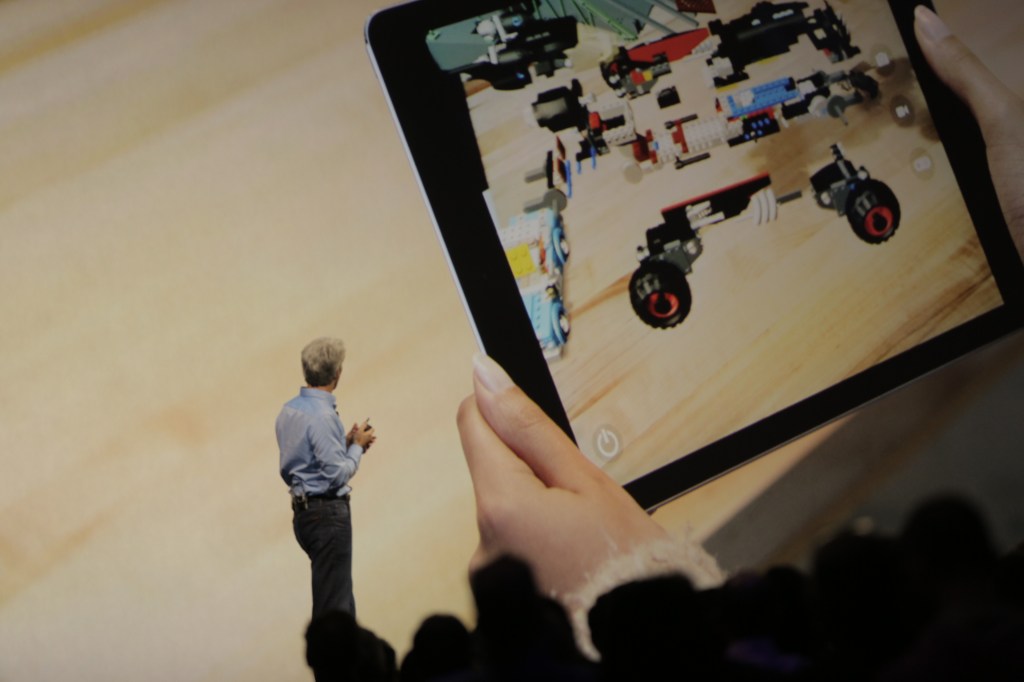Two weeks ago, Apple introduced ARKit, its solution for placing 3D objects realistically into a ‘real’ place. Basically, augmented reality.
And it just so happens that the Holy Grail of the home decor and architecture game has been, for years, being able to place decor and furniture inside a customer’s actual space. Over the past decade, as mobile has taken off, that dream has been transferred from the desktop web browser to phones and tablets.
A couple of factors have lined up to allow this category to explode and become, I believe, one of the first big breakout uses of AR in the App Store.
- First, these kinds of apps need a huge library of 3D models of furniture and accessories. Whole companies were born in the early days that just offered to scan and import these for big companies.
- The tech that allowed them to accurately perform SLAM (Simultaneous Location And Mapping) calculations in real time is far from trivial. Placing objects into a world required people to build the tech from the ground up by creating models of the rooms as well as the objects themselves.
Both of these points are now moot.
I can’t tell you how many of these kinds of companies I’ve seen over the years. Some of them were not bad at all, some were terrible, all were pretty much held back by the technology it took to map a room and place objects. I’ve written extensively about how Apple’s purchases over the last few years have gotten them to a place where they’re able to pack this into a phone — you can read that here.
The best recent stab I’ve seen at this model is called Modsy. It’s a pretty impressive process that has you take a few smartphone pictures that it stitches together and dresses up on its side, delivering you a fully decorated room a couple of days later. But that’s still far from real-time. ARKit is.

So now here we are, with the ability for just about anyone to spin up an AR window inside their app. I predict that we’re going to see some real crap over the next few weeks and months as people just “put an AR on it.” But aside from that, we’re going to see a plug unstoppered on industries that needed a reliable version of this kind of AR portal in order to execute on a vision.
IKEA has announced that it is going to be allowing people to see their particular brand of lasts-just-long-enough furniture set into place in their own homes. IKEA won’t be the last though, by far.
It was even pointed out to me on Twitter that Apple probably just sherlocked the Pair app (a 500 Startups alum that we covered last August, incidentally) that was part of its inaugural Planet of the Apps episode.
The years and years of attempts at this, along with the technical pipeline of the modern online retail experience, has led most big furniture and accessory (and fashion btw) distributors to have all of their products modeled. Either from the original designs (all done in 3D now anyway) or scanned afterwards. Most catalog shots and online images are snapshots of what is technically, at the least, a 360 degree model of an object.
This means that there is a big pent up demand and a reservoir of available material to populate AR worlds. Thousands, hundreds of thousands — probably millions of 3D models of real stuff.
And we’ve now removed what was the biggest technical hurdle by divorcing the “room model” from the “object model.” Apple democratized AR to the tune of hundreds of millions of available portals — but it also did it to the tune of billions of points of interest. Every physical “node” of the world is now a potential layering aspect for AR.
https://twitter.com/flyosity/status/876825594553565184
This is just a curiosity when it comes to individual experiences, but the potential is ridiculous when you start thinking about it in a persistent way.
So if everyone can do it then the value is diminished, right? Not really. This should just allow designers and developers to move up the stack. Now they’re no longer burdened with adapting an existing AR system to their needs or (shudder) manufacturing them from scratch. The focus can be purely on big idea thinking about how to apply AR, the experience of doing so, and how best to conjoin it with other systems like voice, mapping and photography.
Apple just built the AR industry’s shovel. Now all you have to do is decide where to dig.
The initial wave of AR stuff will be right along the lines of what I discussed above. Furniture placed in the real world to see how it looks; filter; fun tricks; games. After that, we’re going to see some really insane stuff as people see what it means to have 350 million connected AR portals that could open onto the same augmented world.































Comment